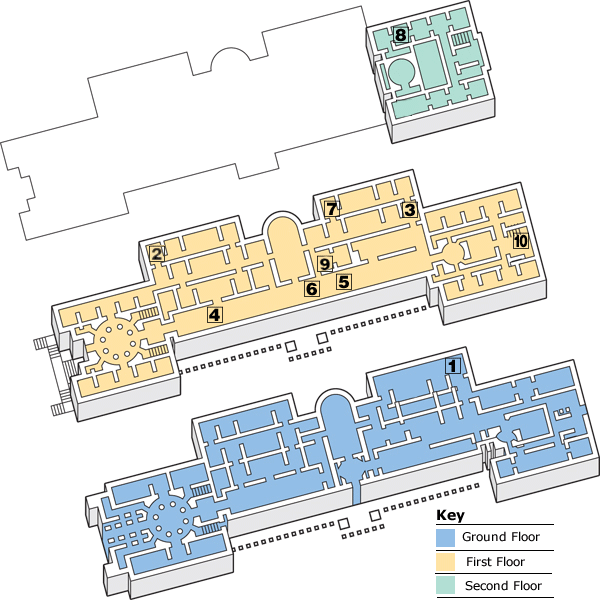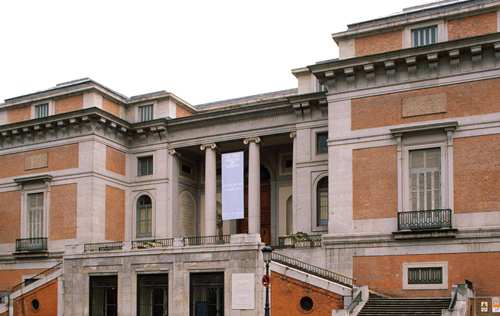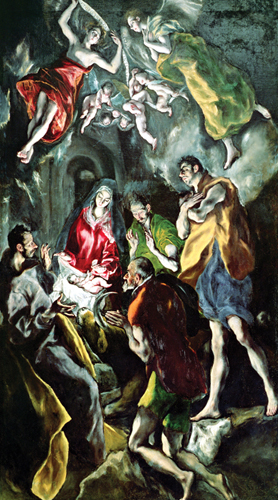Housing one of the world’s finest art collections,
the Prado is one of Madrid’s top tourist attractions. At its core is the
fabulous Royal Collection of mainly 16th- and 17th-century paintings,
transferred from palaces around Madrid. The Prado’s strongest suit is
Spanish painting, the pick of the artists including Goya with 140
paintings and Velázquez with 50. Highlights of the Italian collection
(see Italian Paintings in the Prado)
include masterpieces by Fra Angelico, Raphael, Botticelli, Titian and
Tintoretto. The Prado owns over 100 works by Rubens and canvases by
other leading Flemish and Dutch artists (see Flemish and Dutch Paintings).
A new wing designed by Spanish architect Rafael Moneo in the restored
cloister of the Los Jerónimos church hosts temporary exhibitions and
Renaissance sculpture from the permanent collection.
Paseo del Prado 91 330 2800; for advance tickets call 902 10 70 77
www.museodelprado.es
Open 9am–8pm Tue–Sun; closed 1 Jan, Good Fri, 1 May, 25 Dec Adm €6 (free 6–8pm Tue–Sat, 5–8pm Sun) Dis. access
|
|
Major renovations have
resulted in changes to the Prado’s layout. The permanent collection can
now be accessed by Puerta de Velázquez, the main entrance to the
Villanueva Palace. To see the temporary exhibitions and Renaissance
sculptures, enter via the Jerónimos Cloister. An underground link joins
these two buildings via the ground floor and houses a shop, café,
restaurant, auditorium and cloakroom. Visitors should note that the
gallery is still being re-organised and some art works might not be on
show as indicated.
|


Façade
|
There’s a museum shop, a café and a restaurant, which is useful as you can spend all day in the Prado.
|
|
|
If you want to visit all of Madrid’s art highlights buy a ticket for the Art Walk (El paseo del arte), a combined ticket for the Prado, the Thyssen-Bornemisza and the Reina Sofía. It’s available at all three museums and costs €14.40.
|
|
Top 10 Spanish PaintingsSt Dominic Presiding over an Auto-de-Fé Pedro
de Berruguete (c.1450–c.1504) was influenced by the Italians. This
painting (c.1470) shows St Dominic sitting in judgment with members of
the Inquisition. The Adoration of the Shepherds Born
in Crete, El Greco (1541–1614) was given his nickname (“The Greek”)
after settling in Toledo in 1577. This inspirational 1612 masterpiece
was intended for his own tomb.

Still Life with Pottery Jars Francisco
Zurbarán (1598–1664) was born in Extremadura but trained in Seville.
Best known for his religious paintings, this still life (c.1658–64)
reveals his technical mastery in details such as the gleam of light on
the pewter dish. Archimedes This
humane portrait (1630) of the ancient Greek mathematician is by José de
Ribera (1591–1652). Like many Spanish artists of the period, Ribera was
influenced by Caravaggio. Holy Family with Little Bird Like
Zurbarán, Bartolomé Esteban Murillo (1618– 82) worked in and around
Seville, mainly in the decoration of convents and monasteries. This
beautiful work (1650), painted with fluent brushstrokes, is typical of
his output. Las Meninas This
virtuoso exercise in perspective (1656) is by Diego Velázquez
(1599–1660). Flanking the Infanta Margarita are her two ladies in
waiting (las Meninas). The scene also includes the artist, with paintbrush and palette in hand. The Tapestry Weavers In
this superb painting (c.1651) Diego Velázquez’s depiction of Madrid
upholsterers is also a complex allegory based on the legend of the
weaver Arachne. The Meadow of St Isidore This 1788 Goya landscape brilliantly evokes the atmosphere of the San Isidro and the clear light of spring. Maja Naked This famous portrait (c.1797–1800) is one of a pair by Francisco de Goya (1746–1828) the Maja Clothed is in the same room for comparison. The Third of May in Madrid: The Shootings on Príncipe Pio Hill In
this dramatic 1814 painting, Goya captures the execution of the leaders
of the ill-fated insurrection against the French. The illuminated,
Christ like figure (see Francisco de Goya) represents freedom being mowed down by the forces of oppression.
|